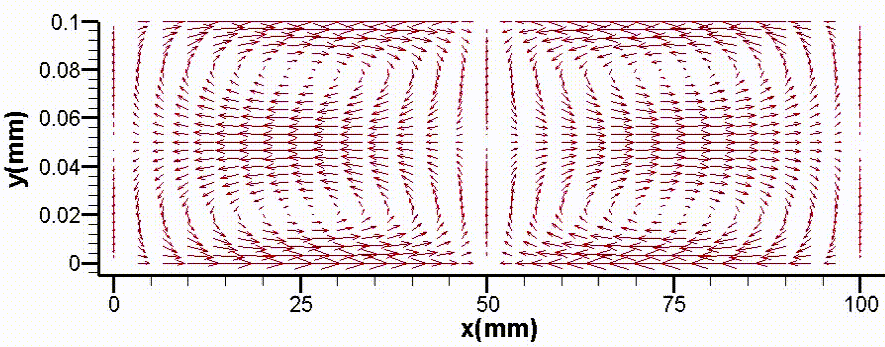
Mixing in a microfluidic device is a major challenge due to creeping flow, which is a significant roadblock for development of lab-on-a-chip device. In this study, an analytical model is presented to study the fluid flow behavior in a microfluidic mixer using time periodic electro-osmotic flow. To facilitate mixing through micro-vortices, non-uniform surface charge condition is considered. A generalized analytical solution is obtained for the time-periodic electro-osmotic flow using a stream function technique. The electroosmotic body force term is accounted as a slip boundary condition on the channel wall, which is a function of time and space. To demonstrate the applicability of the analytical model, two different surface conditions are considered: sinusoidal and step change in zeta potential along the channel surface. Depending on the zeta potential distribution, we obtained diverse flow patterns and vortices. The flow circulation and its structures depend on channel size, charge distribution, and the applied electric field frequency. Our results indicate that the sinusoidal zeta potential distribution provides elliptical shaped vortices, whereas the step change zeta potential provides rectangular shaped vortices [1]. This analytical model is expected to aid in the effective micro-mixer design.
- Kim, H., Khan, A. I. and Dutta, P., 2019, “Time-Periodic Electro-OsmoticFlow with Nonuniform Surface Charges”, ASME Journal of Fluids Engineering, Vol. 141, pp 081201.


